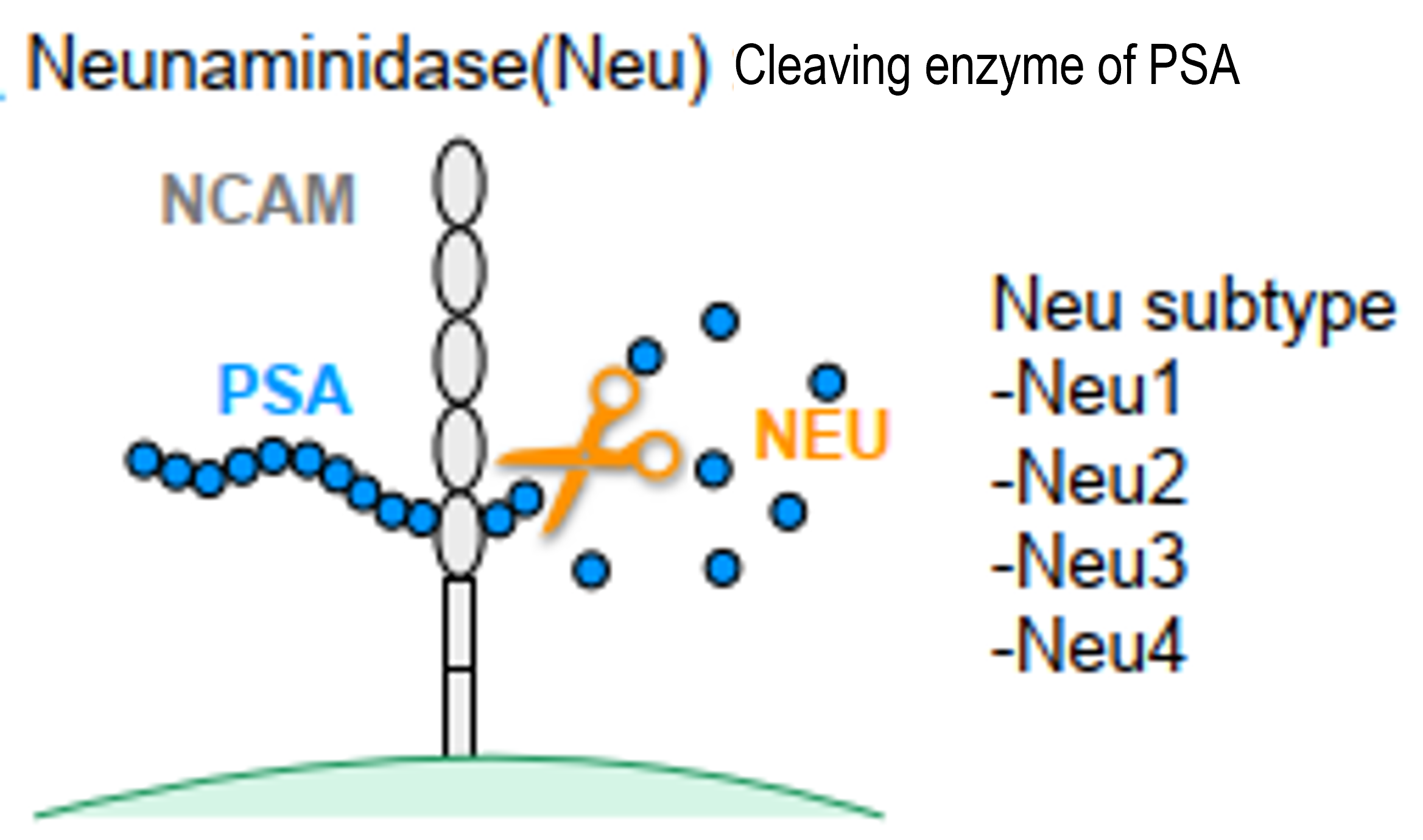Advantages
- Minimally invasive and broad-spectrum regeneration-promoting effects can be expected with the administration of drugs only.
- The use of existing anti-influenza drugs, one of which is a neuraminidase inhibitor, is expected.
- In mice, administration of neuraminidase inhibitors improves motor function lost due to brain injury.
 |
Technology Overview & Background
Neuroregenerative therapies that restore brain function by regenerating lost neurons are important to fundamentally treat brain injury. Stem cell transplantation, administration of nerve growth factors and induction of endogenous neural stem cells have been investigated as neuroregenerative therapies. However, the microenvironment of the brain injury area to be neuro-repaired was an unknown area.
In the course of elucidating the factors and migratory mechanisms required for the migration of new neurons generated from neural stem cells, which are abundant in the ventricular-subventricular zone (V-SVZ), the inventor revealed that, compared to normal brains, new neurons in injured brains adhere to each other, causing migration defects. Polysialic acid (PSA) is known to negatively regulate the NCAM-NCAM adhesion, and PSA is cleaved by neuraminidase (Fig.) The inventors found that the expression of neuraminidase is up-regulated in injured brains, that PSA levels in migrating new neurons was decreased, and that migration of neurons is inhibited by enhanced cell adhesion between new neurons.
The inventors therefore administered an anti-influenza drug (Zanamivir) and N-Acetyl-2,3-didehydro-2-deoxyneuraminic acid (DANA), neuraminidase inhibitors, to mice with brain injury, and found that they increased PSA levels in the mouse brain and promoted neuronal migration toward injured area. The impaired motor function caused by brain injury was restored by enhanced neuronal migration.
Data
- In mice, neuraminidase inhibitors (DANA and Zanamivir) were administered for 14 days starting 7 days after brain injury and histological analysis 35 days later showed an increase in NeuN+ newborn neurons, a marker for mature neurons, around the injured area compared to the control group.
- In a similar test system, the percentage of left-sided slip and fall events was reduced in the inhibitor group compared to the control group, confirming an improvement in motor function (Figures A-C).
 |
Patents
PCT/JP2023/032912
Investigator
Dr. Kazunobu Sawamoto
Expectations
We look forward to partnering with companies that can jointly work on neuroregenerative therapies based on the findings of this invention. In particular, we are looking forward to (I) joint evaluation of the efficacy of the invention with companies developing neuraminidase inhibitors or derivatives thereof and joint development of therapeutic agents for cerebral infarction, and (II) joint research with companies developing therapeutic agents based on the concept of neuroregeneration, such as cell therapy.
Project. WL-03996


